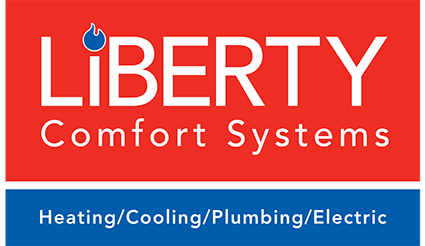
Although UV lamps are only gaining popularity for their applications in homes, they have always been used to kill microorganisms in the air, water, and on surfaces. Today, the lamps are used to improve indoor air quality by killing airborne microbes.
What Are UV Lamp Air Purifiers?
UV air purifiers apply UV light (UVC) to make airborne pathogens and other microorganisms inactive. You can use one of these devices to get rid of bacteria, viruses, and mold. These units reduce the air pollutants in indoor living spaces.
In some publications, the technology is referred to as UV germicidal irradiation (UVGI) air purification. This sets the units apart from systems that contain UV light but do not use it directly to inactivate microorganisms.
You can buy these systems as standalone units, or you can have them installed into your existing HVAC system. When forced air goes into the purifier, the UV lamps inside it directly disinfect the air through germicidal irradiation.
The air purifiers will require additional systems to make them more efficient and realize their full effectiveness. These systems include HEPA (High-efficiency Particulate Air) filters to clear out other particles such as dust. According to the EPA, a UV-C air purifier is ineffective as a stand-alone unit because it will not remove dust and other particles.
How Does Germicidal UV Work?
Germicidal UV light has been in use for a long time. It has been used in the treatment of tuberculosis and in disinfecting kitchens, hospitals, laboratories, and meat processing plants. In France, municipalities use UV-C to treat water for residential use.
Ultraviolet light falls into three different categories. The first is UV-A, which has between 315 and 400 nanometers wavelength. The photons of UV-A vibrate a little more vigorously than visible light. UV-B is the second category of UV light and its wavelength is between 280 and 315 nanometers. Its photons are even faster.
The third category is UV-C, which is what UV lamps use. UV-C light has wavelengths between 100 and 280 nanometers. Its photons vibrate the fastest and carry the most energy. This extra energy in UV-C is responsible for disinfecting surfaces, air, and water.
The use of UV light to disinfect has replaced conventional means of disinfecting. Over the past two decades, these irradiative cleaning systems have found their use in residential and commercial premises.
When molecules absorb UV-C, it changes them. DNA is especially susceptible to harm from UV-C. When air is forced into the device, the UV light damages the DNA of microorganisms in that air. This renders the organisms inactive and makes the air safe for you.
UV-C in lamps acts the same way as UV-C from the sun. If you stand in the sun for prolonged periods, you get sunburned. Sunburn is a radiation burn caused by the UV from the sunlight. Your skin turns red and inflamed as a response to the damage of the skin cells’ DNA by the sun’s UV rays. When this damage is exacerbated, it can potentially cause cancer.
Bacteria are single-celled organisms that rely on their DNA to stay alive. When the light destroys their DNA, it kills them. These systems can be used in residential and commercial premises to kill microorganisms without causing any side effects to humans.
The Performance of UV Light Air Purifiers
UV lamps use either quartz or phosphor to emit UV light. Depending on the emitter, the light comes out blueish or invisible. The EPA notes that residential UV light air purifiers use mercury lamps to emit UV-C. This light comes at a wavelength of 254 nanometers.
To make these systems efficient in air purification, manufacturers combine forced air systems with a HEPA filter. After the filter traps particles in the air, the UV-C light kills the microorganisms.
When operational, the system forces indoor air through a chamber with lamps that emit UV-C. In a portable system, the lamps are located below a filter to kill microorganisms the filter cannot trap. The performance of this system is dependent on several factors, including humidity, temperature and the type of lamp you are using.
The lights operate in silence. Most of the lights produce a glow that is not visible to you, but that will depend on the emitter and the casing around the unit. They also produce no odor. Depending on the make and model you are using, you may need to replace the bulbs every year.
If you’re in the Anoka area, Liberty Comfort Systems can help you install the units and perform regular maintenance and repairs of these air purifiers.
Are UV Light Air Purifiers Dangerous?
UV air purifier manufacturers take the necessary precautions to ensure that the air purifiers are safe for home use. The main negative aspect of these lights is the fact that they can transform the oxygen in the air into ozone.
They do this through photolysis in which they split the oxygen in the air into two atoms. When one of these atoms combines with the oxygen in the air, they form ozone. This will not happen with most lights because the UV-C lights have a special coating that makes them safe.
How Effective Are UV Lamp Air Purifiers?
UV-C light is effective in destroying microbes. However, the effectiveness of UV lamps is dependent on a number of factors. In most cases, the manufacturers advertise the devices as effective in reducing mold allergens and dust mites.
Their effectiveness is dependent on whether the microbes come into contact with the UV light inside the lamp chamber. In some units, the effectiveness of the light might be diminished by the cooling effect of your HVAC system.
The emitter of the light also determines the strength of the light and its effectiveness. Other factors include how long the microbes are exposed to the light and the number of pollutants in the air. To ensure the system is effective, it needs to be designed, placed, and sized correctly. At the right size, these purifiers can deactivate mold and bacteria and even destroy some viruses.
However, the system does little to destroy mold and bacterial spores. These spores resist UV radiation, and to kill them, you need a high dosage of UV light. Such a high dosage is not present in UV lamps used in residential settings. According to the EPA, destroying spores requires longer exposure to higher levels of UV light.
Will the Air Purifiers Help in Removing Allergens From the Air?
Yes, but there are some limitations. Such a devise is effective in deactivating mold, and the HEPA filtration system can trap other allergens to keep you safe. Some fumes, smoke, and smells will not be trapped by the system, and they will get through the system unchanged. Certain dangerous gases could still pass through and cause harm.
The best way to stay protected is by choosing the right UV lamp air purifier. You need a coated unit that doesn’t produce ozone. You also need one with a HEPA filter to trap other particles.
Contact Liberty Comfort Systems for Your Needs
At Liberty Comfort Systems we install, repair, and maintain heating and cooling systems for clients throughout Anoka and the surrounding areas. You can also call us when you need duct cleaning, electrical services, and system installation or maintenance of indoor air quality equipment. Besides that, we deal with products such as boilers, heat pumps, solar equipment, and mini-splits. Call us at Liberty Comfort Systems and get a free quote.

